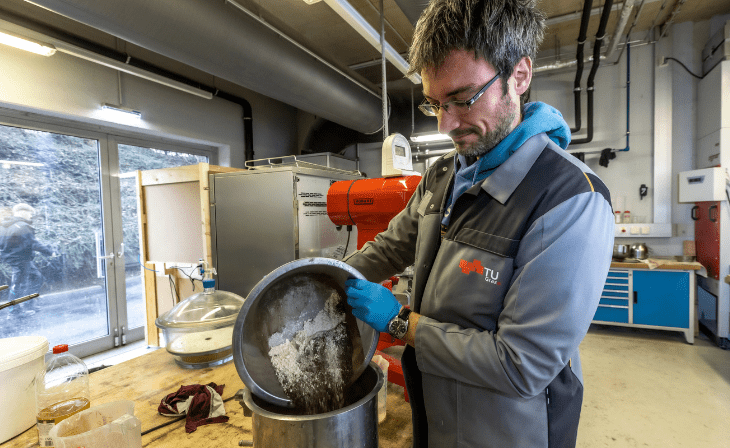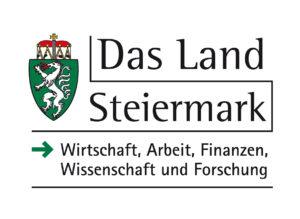Strong companies on board
Sustainably produced concrete mixtures from mineral residues and waste materials could replace cement-based concrete in the future, especially in corrosion-prone application environments such as sewage systems, biowaste plants or tunnel drainage systems – for Cyrill Grengg from the Institute of Applied Geosciences at Graz University of Technology, this is not only an achievable goal, but also makes economic and ecological sense. He heads the “Christian Doppler Laboratory for Residue-Based Geopolymer Building Materials in the CO2-Neutral Circular Economy”, which was officially opened today.
Eight weighty corporate partners are on board here, including companies from Green Tech Valley: voestalpine Stahl Donawitz GmbH, Stahl- und Walzwerk Marienhütte GmbH, brantner green solutions GmbH, Initiative Ziegel, Forschungsverein Stein- und keramischen Industrie, CharLine GmbH, Kirchdorfer Fertigteilholding GmbH, MM-Kanal- Rohr- Sanierung GmbH and the Gemeinschaft steirischer Abwasserentsorger (including Linz AG and AWV Wiener Neustadt) all see potential in the use of construction waste, slag, metallurgical gravel, mineral wool or ash for more environmentally friendly and resistant concrete.
This latest CD laboratory at Graz University of Technology was opened a few days ago. Seven years of research will now be carried out together with the eight company partners. The largest public sponsor of the CD Lab is the Federal Ministry of Labor and Economy (BMAW). “The large number of participating companies from various industries shows the great interest in higher resource efficiency and sustainability. Building materials from residual and waste materials not only bring economic benefits, but also help to reduce the burden on the environment. The know-how researched here can be the basis for many other innovations,” emphasizes Minister of Labor and Economic Affairs Martin Kocher.
Less cement, resources and corrosion
Inorganic industrial secondary raw materials, such as slags and ashes, as well as residual materials, such as mineral wool and clay-rich demolition materials, are further processed in the CD laboratory and combined with carbon-rich waste materials, such as (waste) oils, biomass residues or organic fibers, depending on requirements and intended use. The resulting geopolymer is an alternative to cement-based concrete: it offers comparable material properties, has better resistance to many types of corrosion, and leads to less resource consumption by recycling previously landfilled residual and waste materials.
“Chemically, the geopolymer is something completely different from Portland cement, but the physical properties are very similar or even better in some cases,” says Cyrill Grengg, who sees great potential in geopolymers, especially in their much higher resistance to corrosion. Portland cement is by far the most widely used binder in modern construction. However, it is susceptible to corrosion by wind, weather and other environmental influences, such as (bio)chemically aggressive wastewater from sewage systems and sewage treatment plants. This leads to safety problems and high expenditures for the maintenance of structures: Worldwide, costs caused by corrosion are estimated at 2.5 trillion U.S. dollars (or approx. 3.4 percent of global gross domestic product), large shares of which relate to the building material concrete
From landfills to a circular economy
At the same time, the production of building materials is responsible for around nine percent of all greenhouse gas emissions generated worldwide. And the current handling of residual and waste materials, for example from construction projects, still shows great potential in terms of recyclability: 54 million metric tons of mineral waste are generated annually, or 76 percent of the total waste volume. Of this, nearly 60 percent is landfilled, resulting in the loss of valuable resources and large areas of land to landfills. “Today, most of the residual and waste products used in the CD Lab are landfilled, and only a small portion is recycled. We want to get these materials away from landfills and into a CO2-neutral circular economy,” says Cyrill Grengg.









